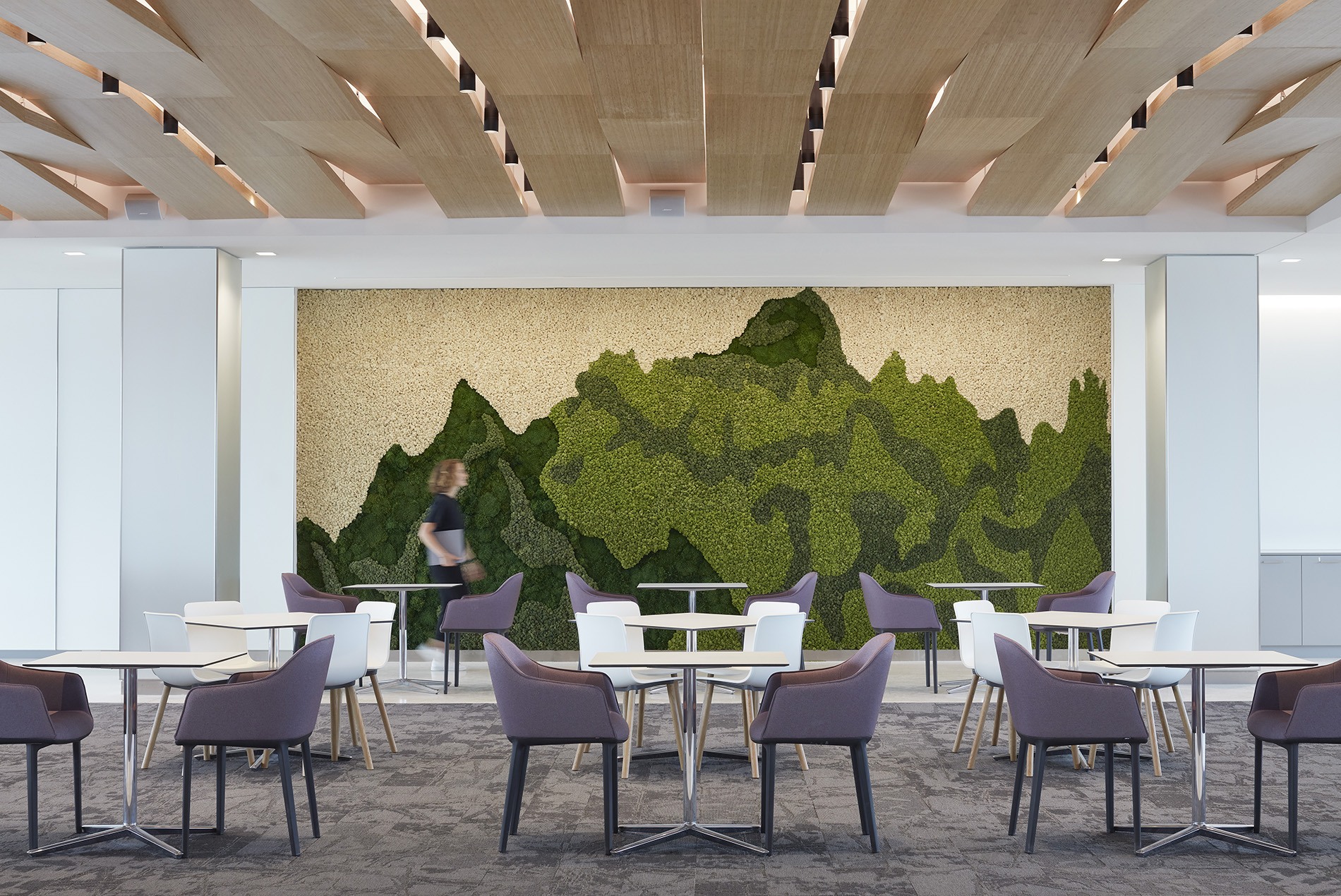LG wanted to consolidate its North American headquarters on a single site across the Hudson River from northern Manhattan.
The facility needed to sustain the Seoul-based company’s leadership in consumer electronics while also protecting the iconic vistas and integrity of the adjacent Palisades Interstate Park, a National Historic Landmark.
HOK’s team collaborated with LG’s leaders and local conservation groups to create a design that nestles the 350,000-sq.-ft. building into the landscape and below the tree line. The horizontal headquarters, or ‘groundscraper,’ is 1,300 feet long—equivalent to a 120-story office tower.
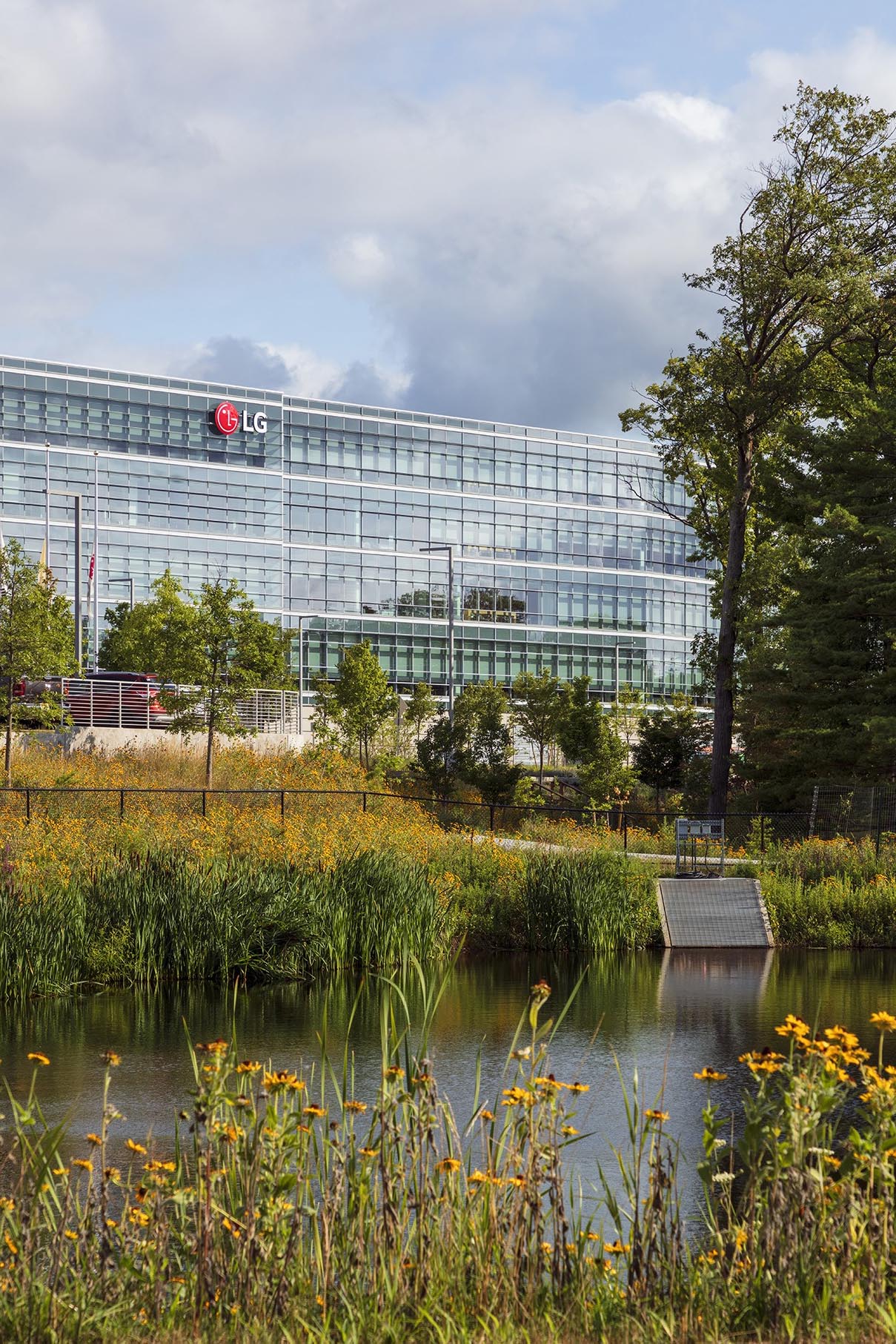
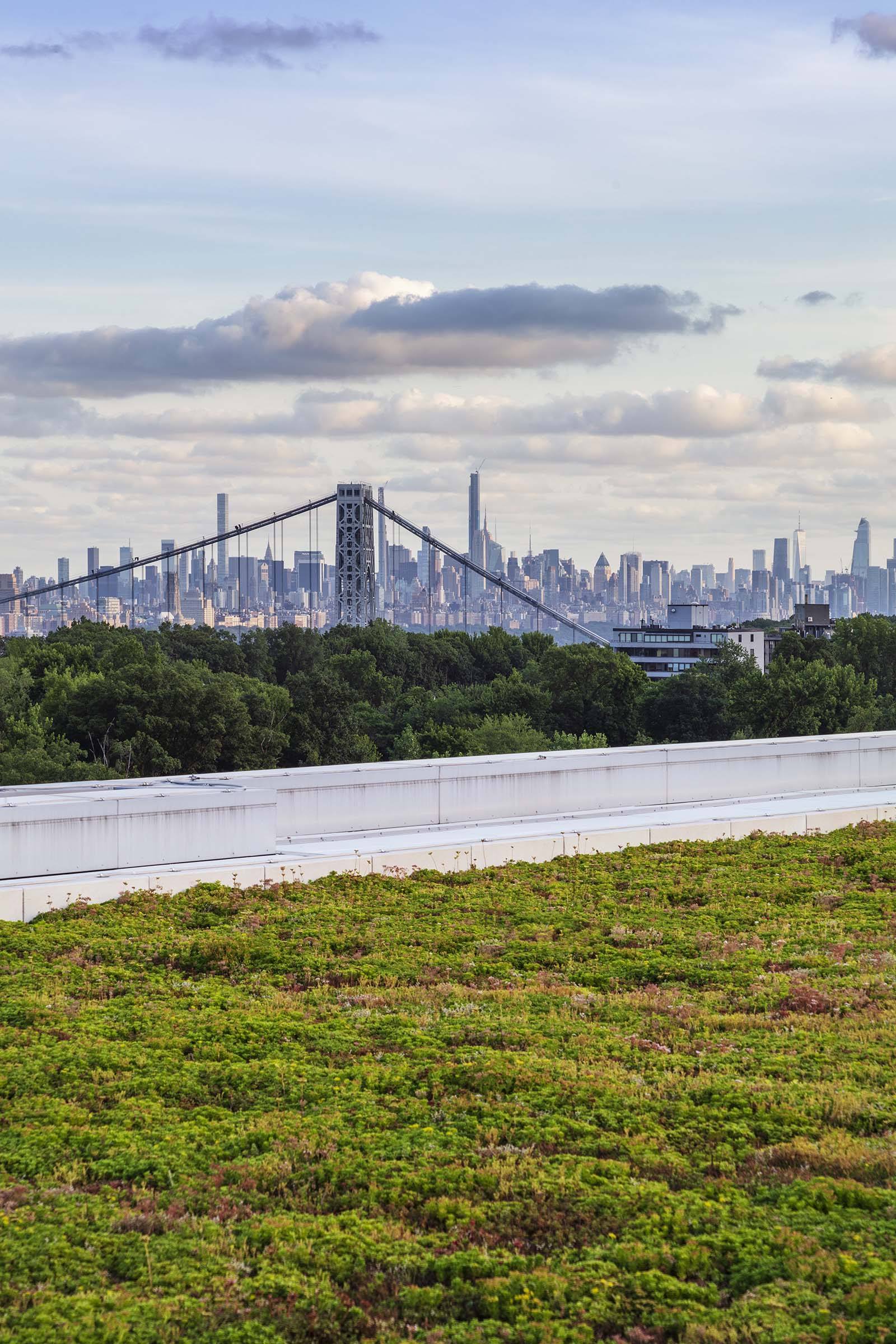
Suburban Office Model
LG’s new campus has become a post-COVID-19 model for companies seeking flexible office space outside urban centers.
The design rejects the deep floor plates that have been so common in suburban office buildings. Instead, two narrow office wings rest on a vegetated plinth that appears to grow out of the earth. The office wings each are less than 100 feet wide, allowing daylight to flood the space and providing views of nature. Open floor plates give people plenty of space to spread out. Stairways are located along the perimeter of the building and enclosed with glass, offering a pleasant alternative to elevators.
A three-story glass ‘cube’ with a public atrium links the two buildings.
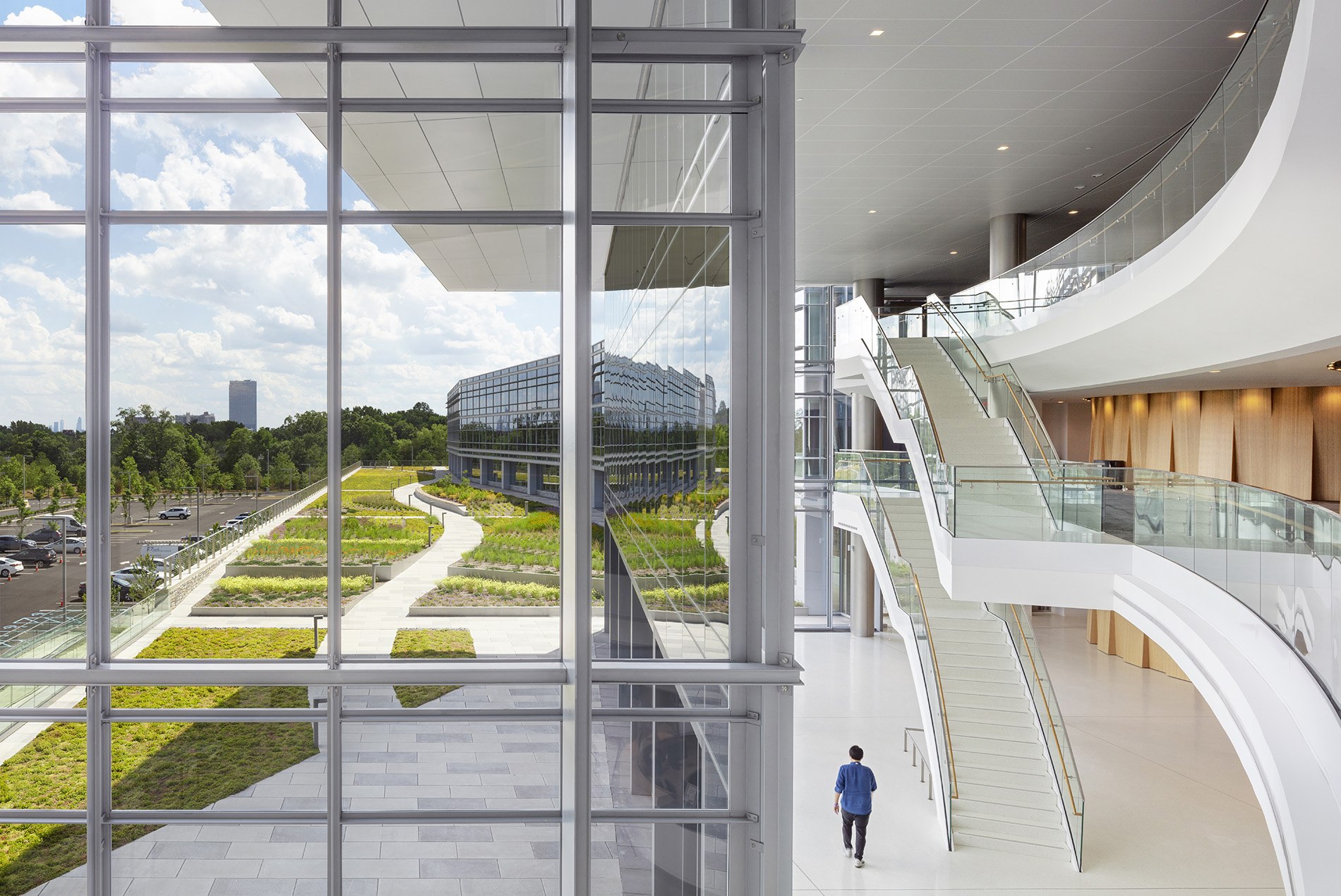
Healthy Work Environment
Along with providing views out to the Palisades environment and river, easy access to the outdoors enhances the mental and physical well-being of LG’s people. The grounds include outdoor terraces, restored woodlands, contemplative Korean gardens, a walking trail that weaves through the site and a basketball court.
The cafeteria opens to a landscaped plaza and the fitness center opens to a courtyard.
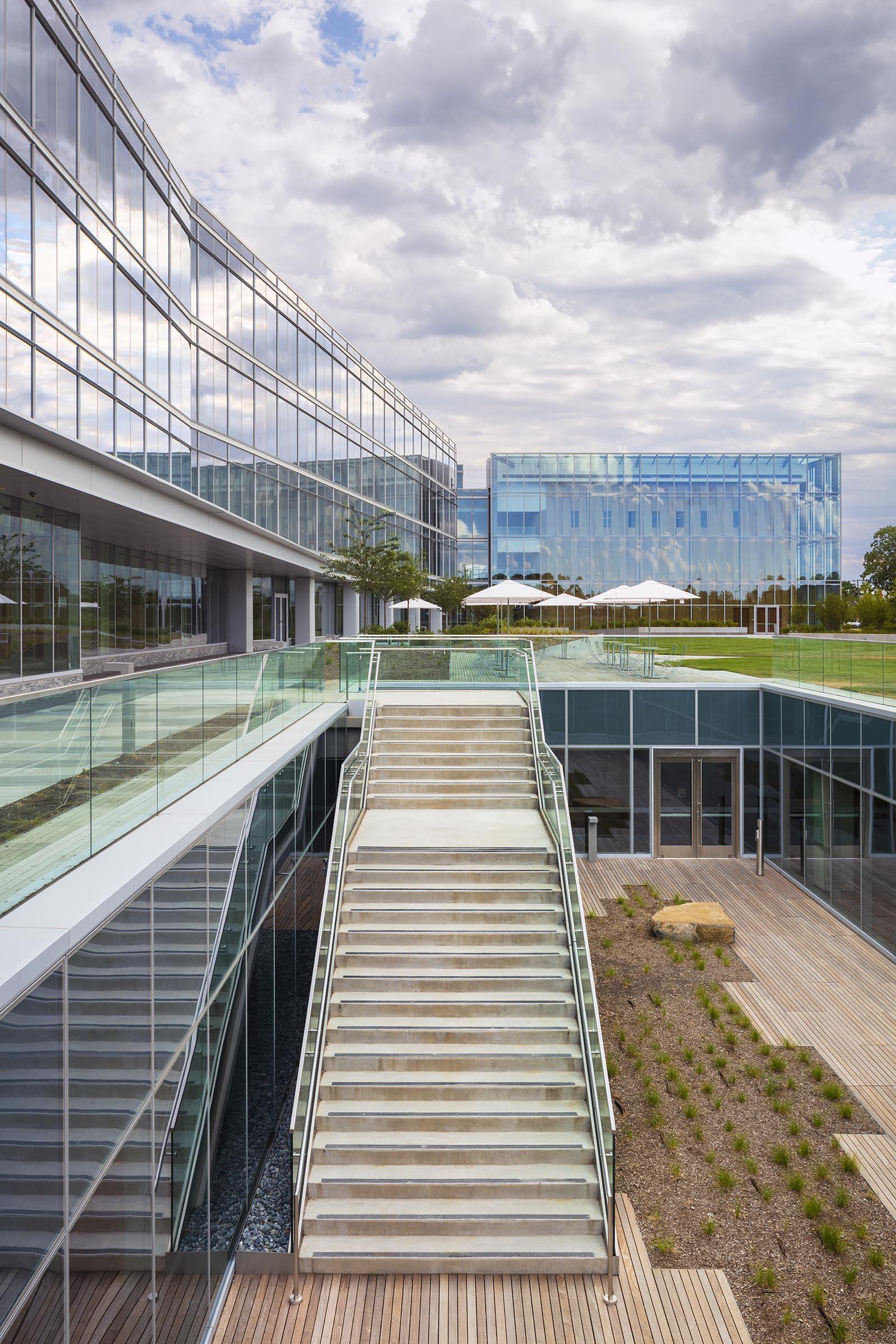
An 18,000-square-foot, custom-built glass box between the two office wings acts as the fulcrum for campus activity.
A Restorative Site
The rocky, 27-acre site along the Palisades Parkway previously had been home to a bank processing center. It was covered by a sea of asphalt.
Blending the architecture with the landscape, the design preserves existing woodlands and wetlands while restoring much of the land to its natural habitat.
A feng shui master guided the design team on orienting the building to the southeast, stepping down toward the river.
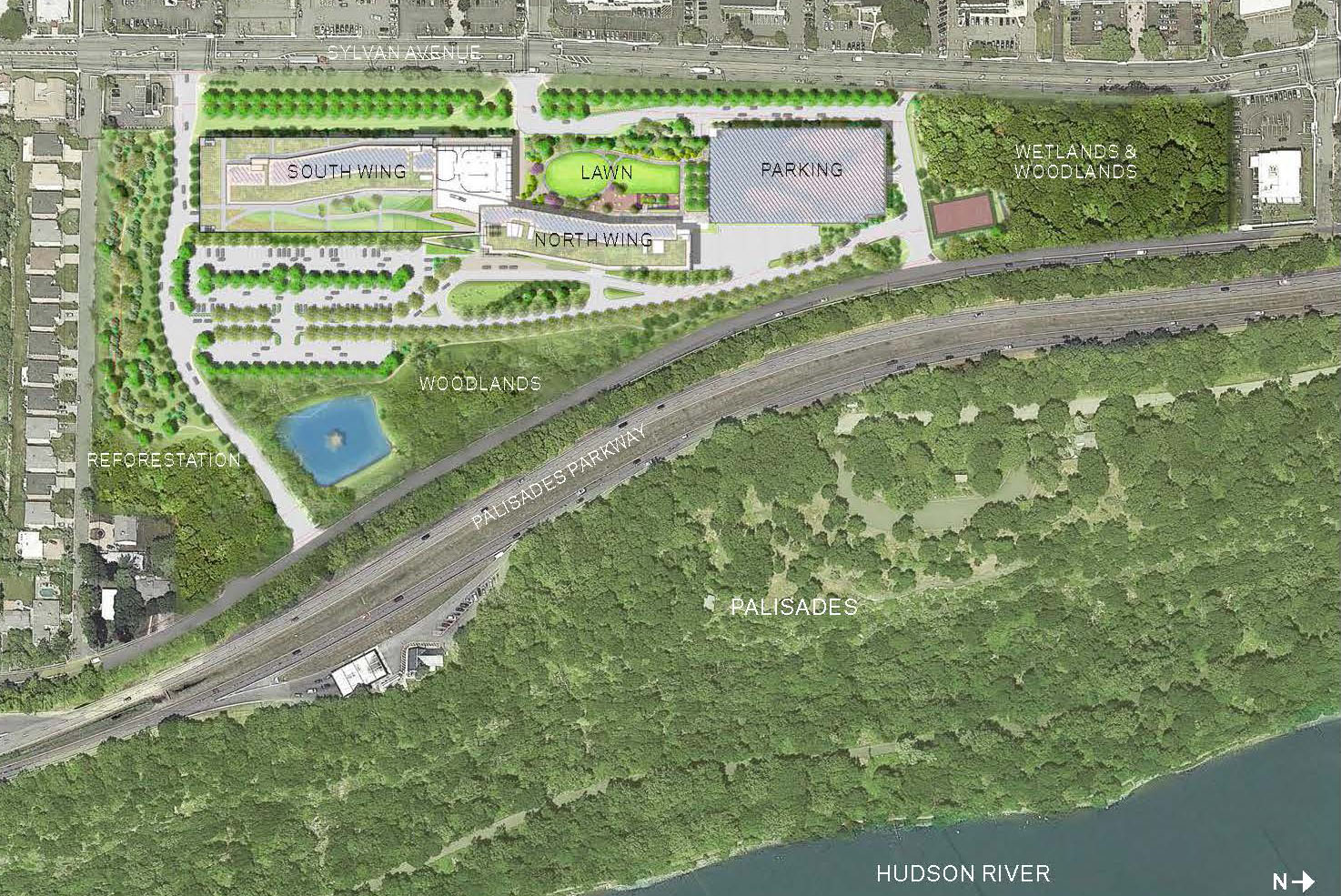
"The design integrates LG’s aspirations to build a world-class, sustainable headquarters in a park-like setting below the tree line of the historic Palisades." — Kenneth Drucker, FAIA , Design Principal
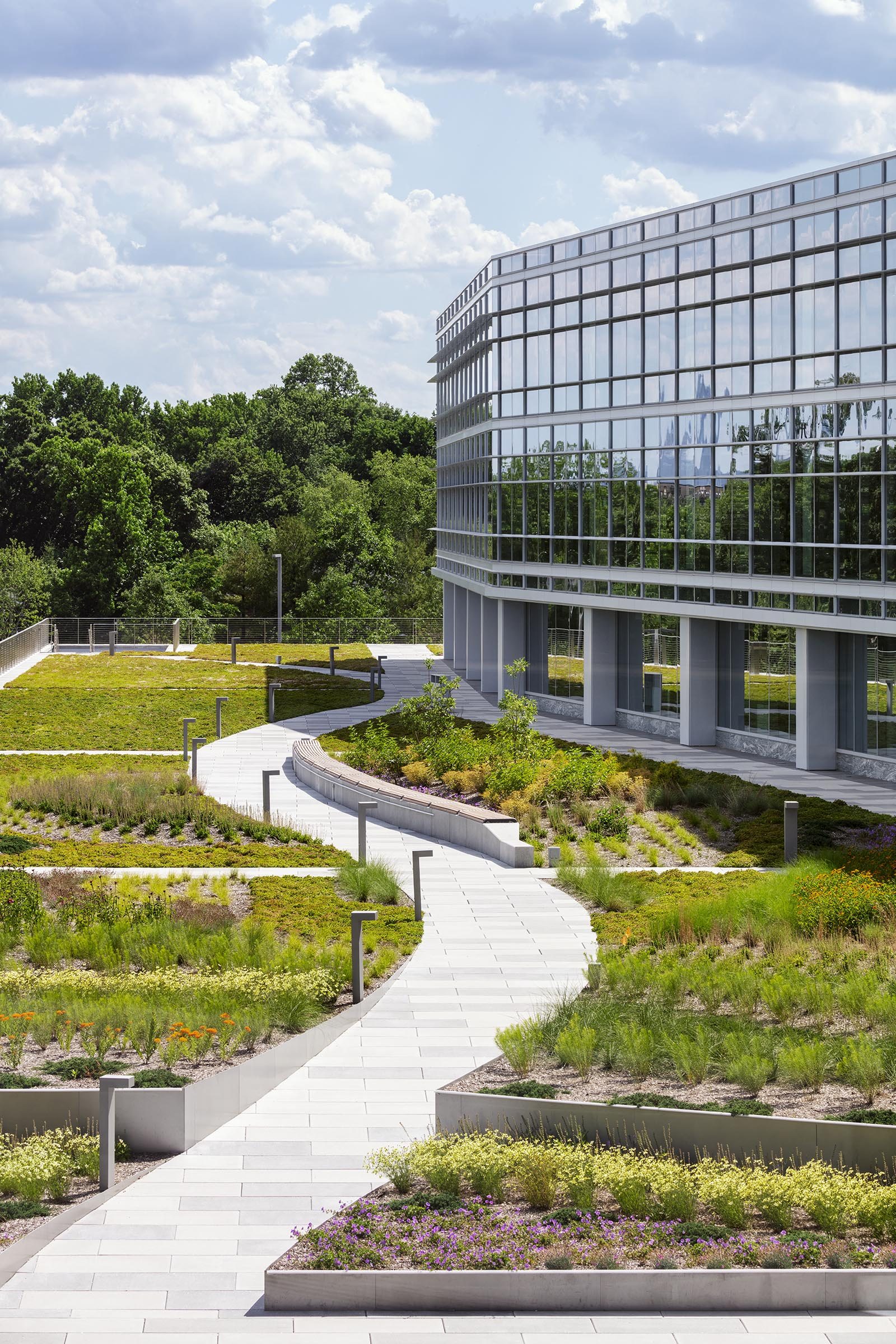
Adding more than 1,500 trees (most of them mature) and 50 percent more green space to the site softens the ecological and visual impact of the development.
A large landscape buffer shields the buildings from the residential neighborhood to the south. An expansive green space faces the Hudson River.
If LG needs to expand in the future, there is room to add a third wing on the current site of the visitor parking lot, with bridges connecting to the existing buildings.
LEED Platinum Sustainable Design
Building an environmentally responsible headquarters was a priority for LG. The campus has achieved LEED Platinum-NC certification.
A series of glass planes wrap the steel-structure building, with horizontal louvers on the eastern and southern facades protecting it from glare and heat gain. A folded ‘butterfly wing’ of additional horizontal louvers accentuate the main public entrance on the east side.
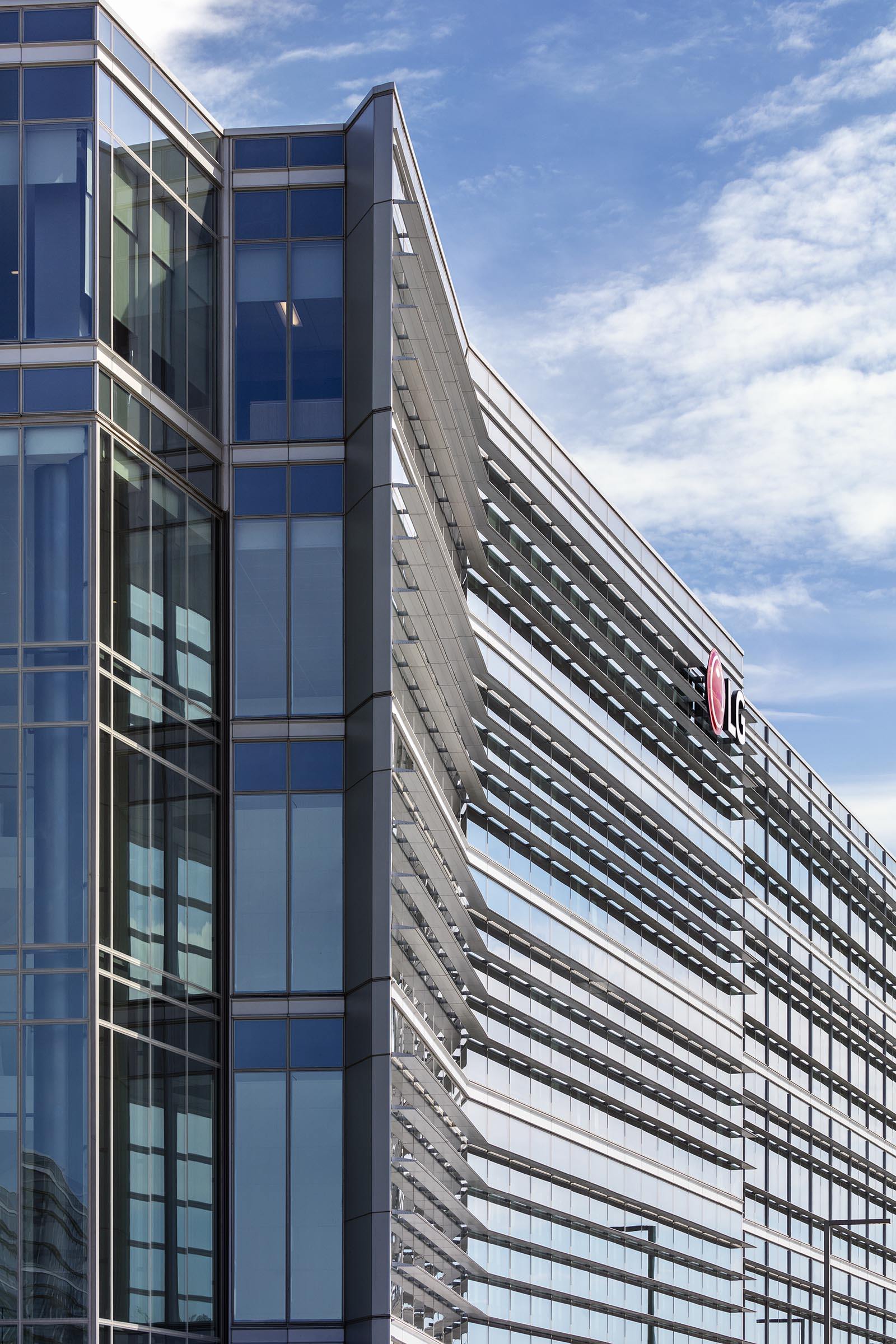
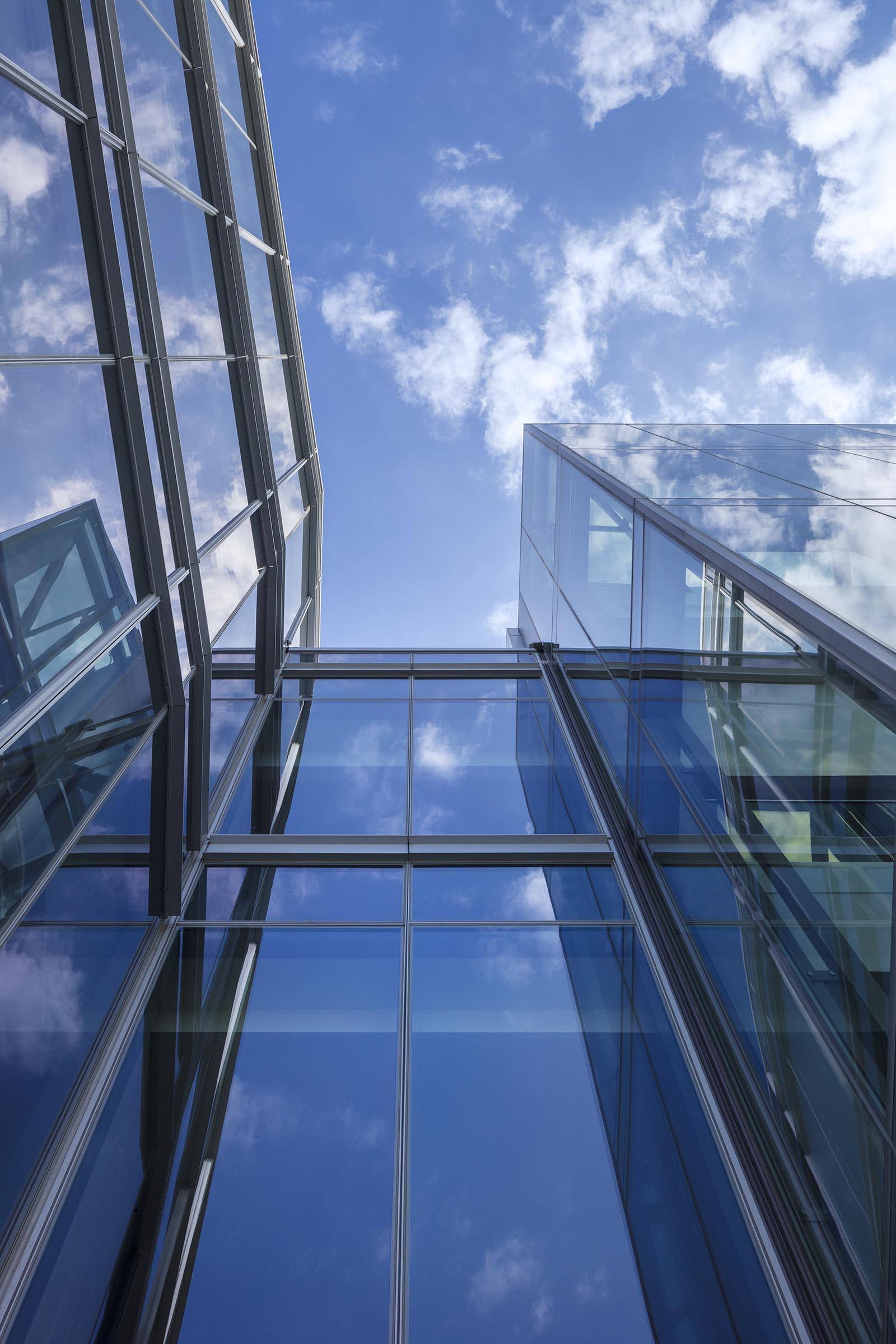
Sixty thousand square feet of LG solar panels on the western halves of each office wing and above the parking garage generate 30 percent of the electricity used on the site. With LG’s commitment to purchase green power for the remaining 70 percent, the facility is carbon neutral for electricity. The energy use intensity (EUI) was 58 percent lower than the AIA 2030 benchmark for a similar building.
Two acres of green roofs with native plantings run alongside the PV modules atop the office wings. Using every available portion of the roof for either PVs or plantings improves climate resilience.
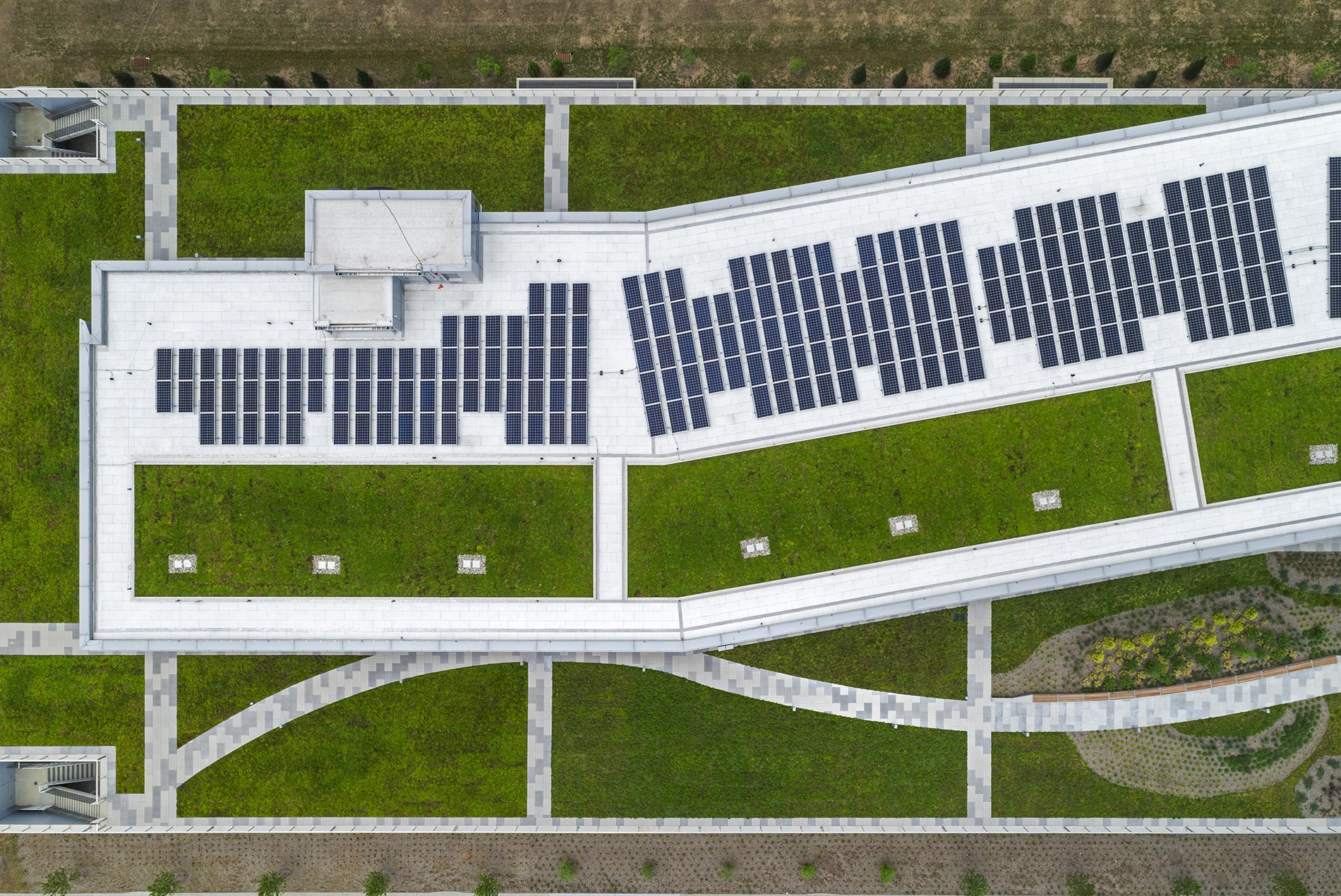
Other sustainable strategies include restoring six wetlands, three native woodlands and a stormwater detention pond to reduce site runoff and collect stormwater.
This site adjacent to the Hudson River is on an important migratory path for birds. The design team followed Audubon Society guidelines for bird protection, including use of frit patterns on glass facades. Indirect site lighting, automatic shades and smart lighting systems alleviate light pollution.
LG’s people have access to electric vehicle charging stations and ample space for bike storage.
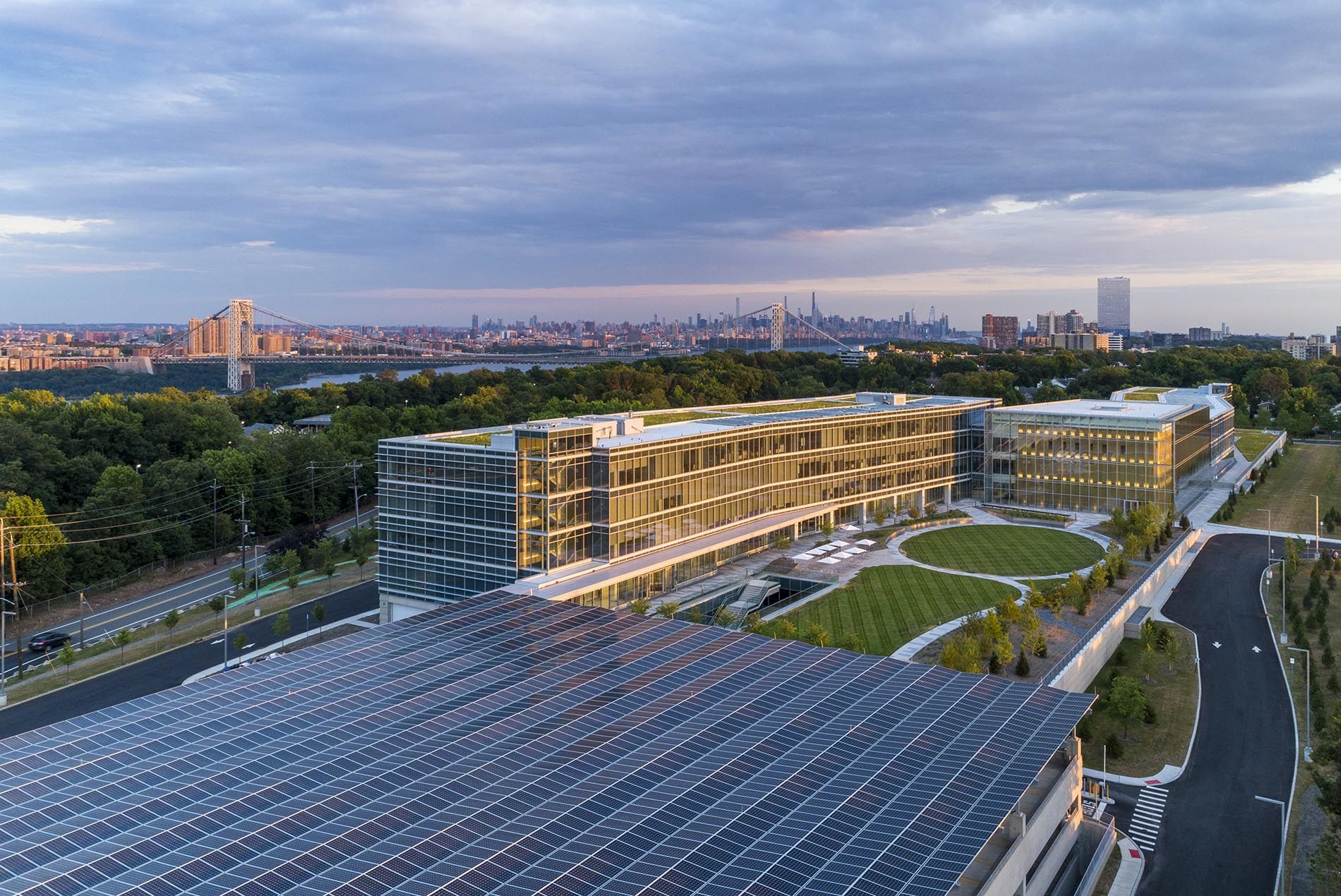
High-Performance Workplace
Based on LG’s minimalist design aesthetic, the understated interiors feature a neutral color palette with occasional pops of brand-related color.
The main building entry and dining areas have green walls inspired by Korean topographical patterns.
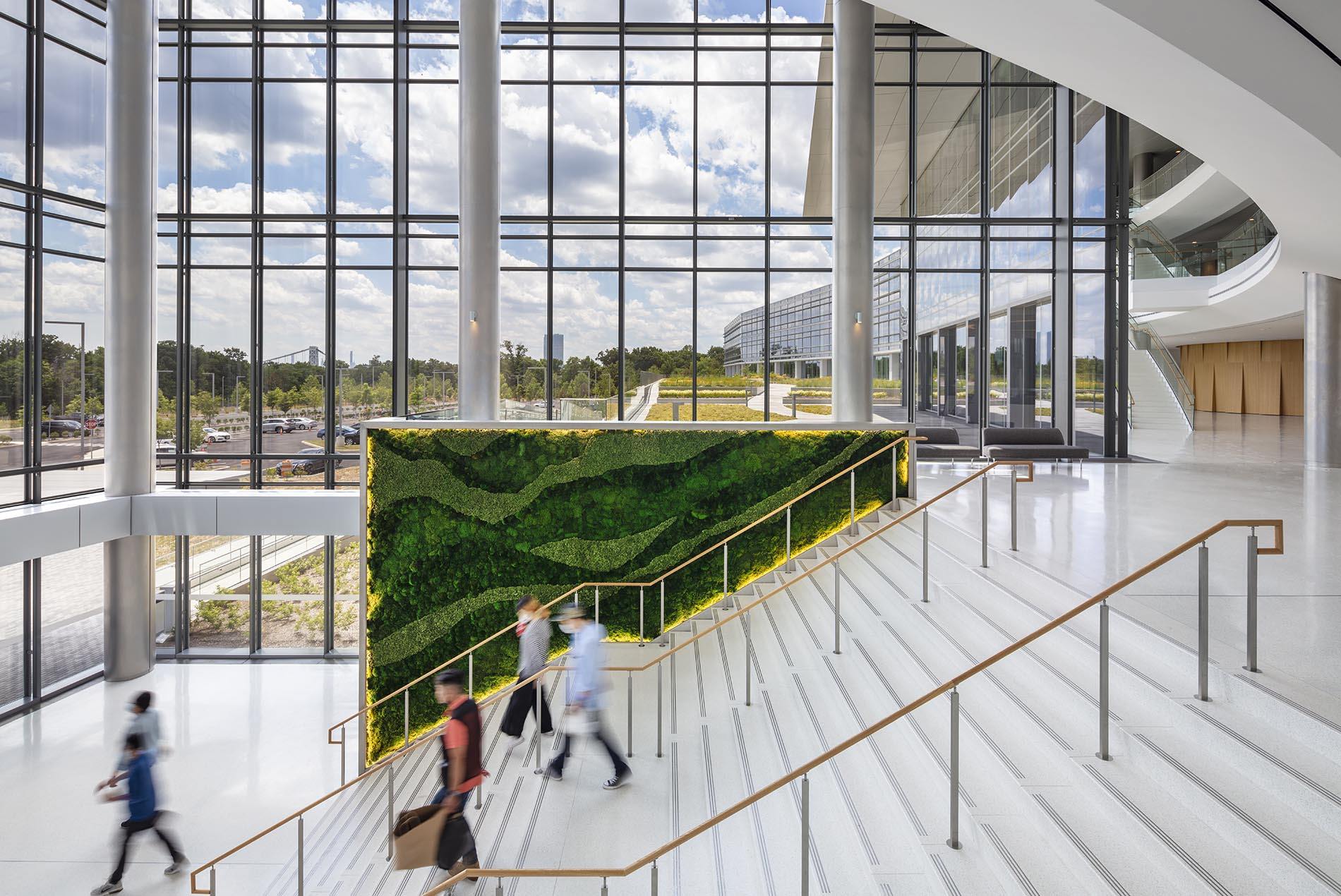
The modular, open-office floor plan includes a series of centrally located work cafes and meeting nodes.
Private offices are in the center, away from exterior windows. This enables daylight to reach deep into the space and offers views of the outdoors from most parts of the building.
The headquarters includes an executive floor with a boardroom.
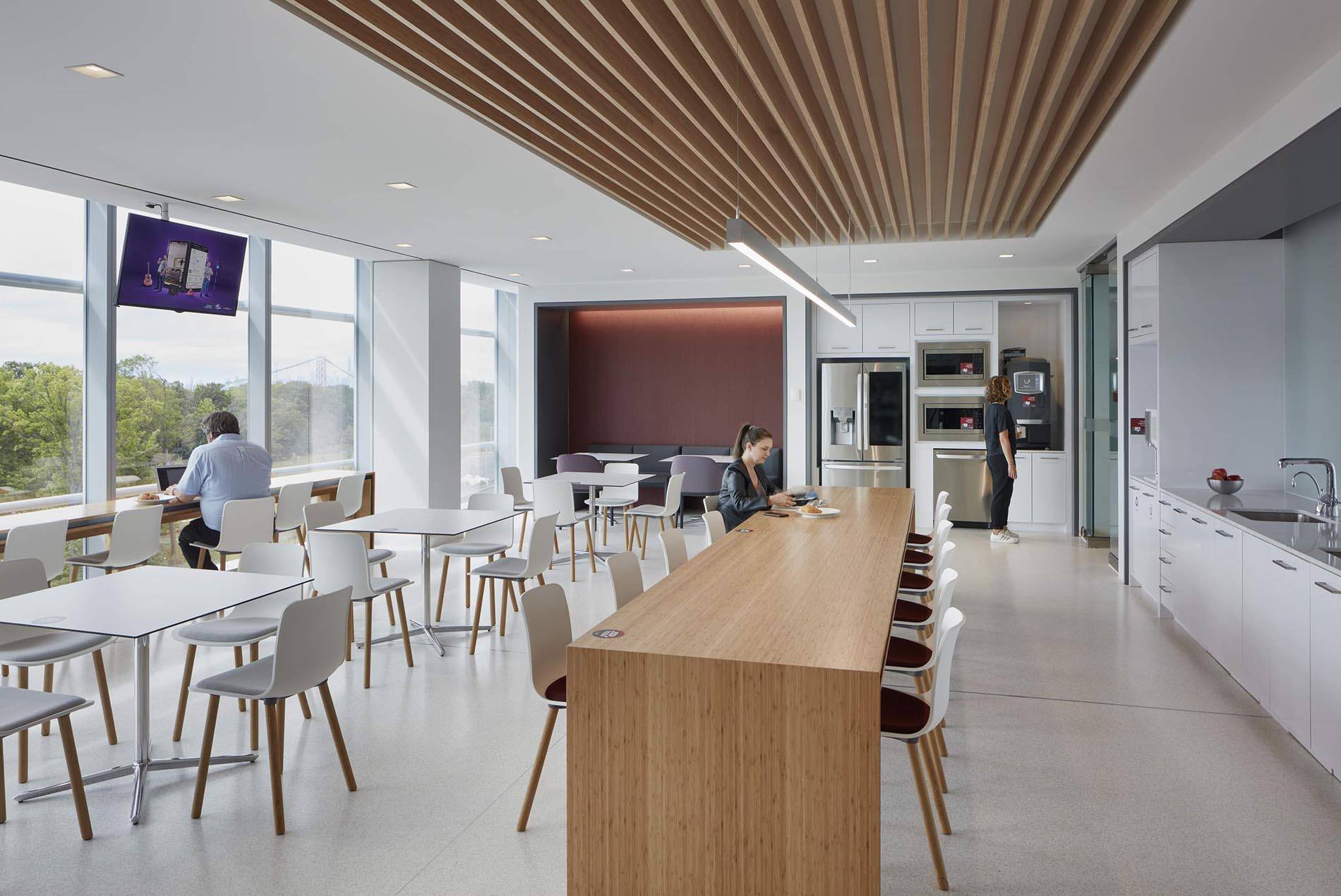
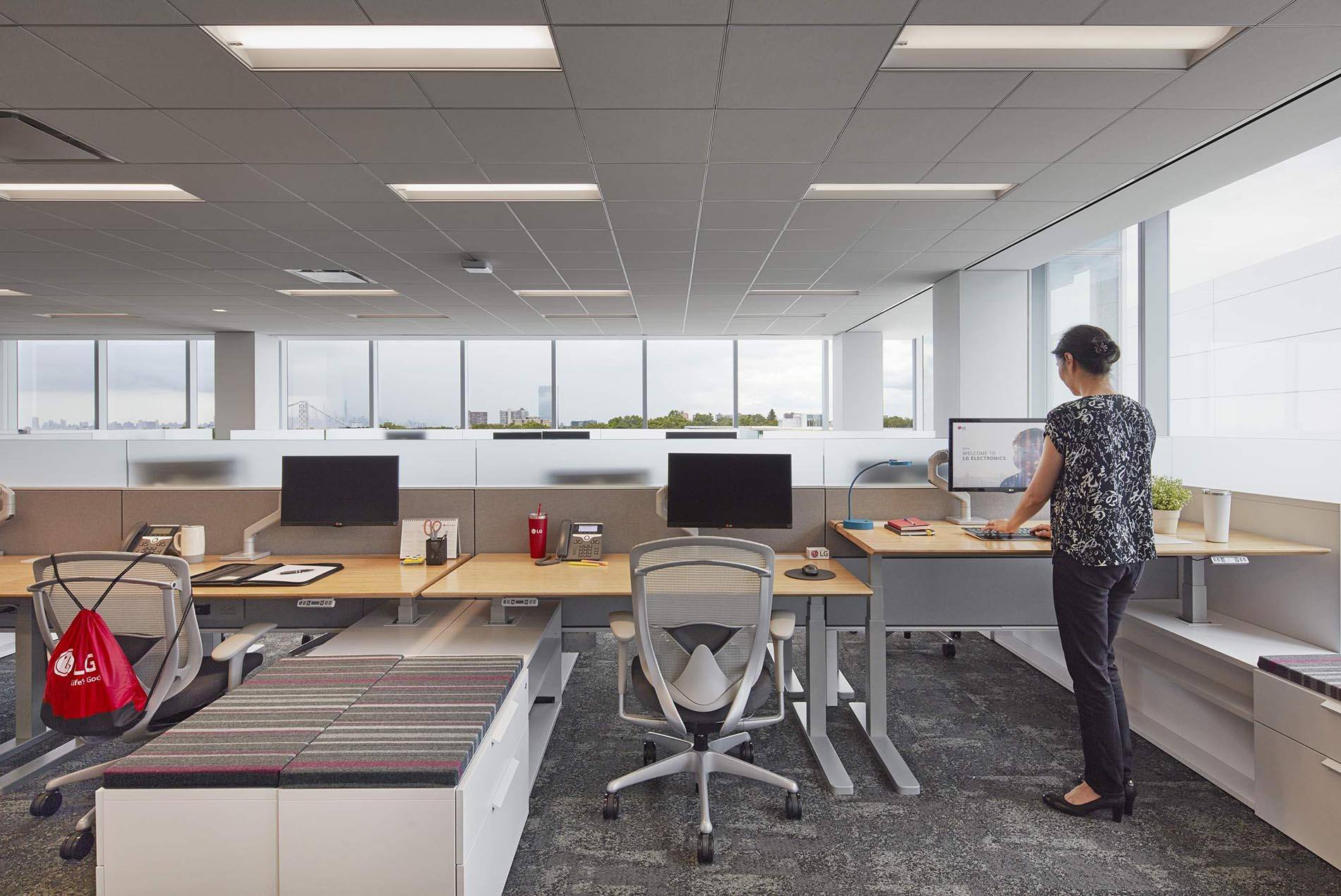
LG’s technologies and systems are integrated throughout the campus. This includes digital signage displays, smart appliances, photovoltaic panels and HVAC systems. The team specified LG Hausys modular carpet tile and solid surface (HI-MACS) and quartz (Viatera) for millwork elements, counters and wall paneling.
